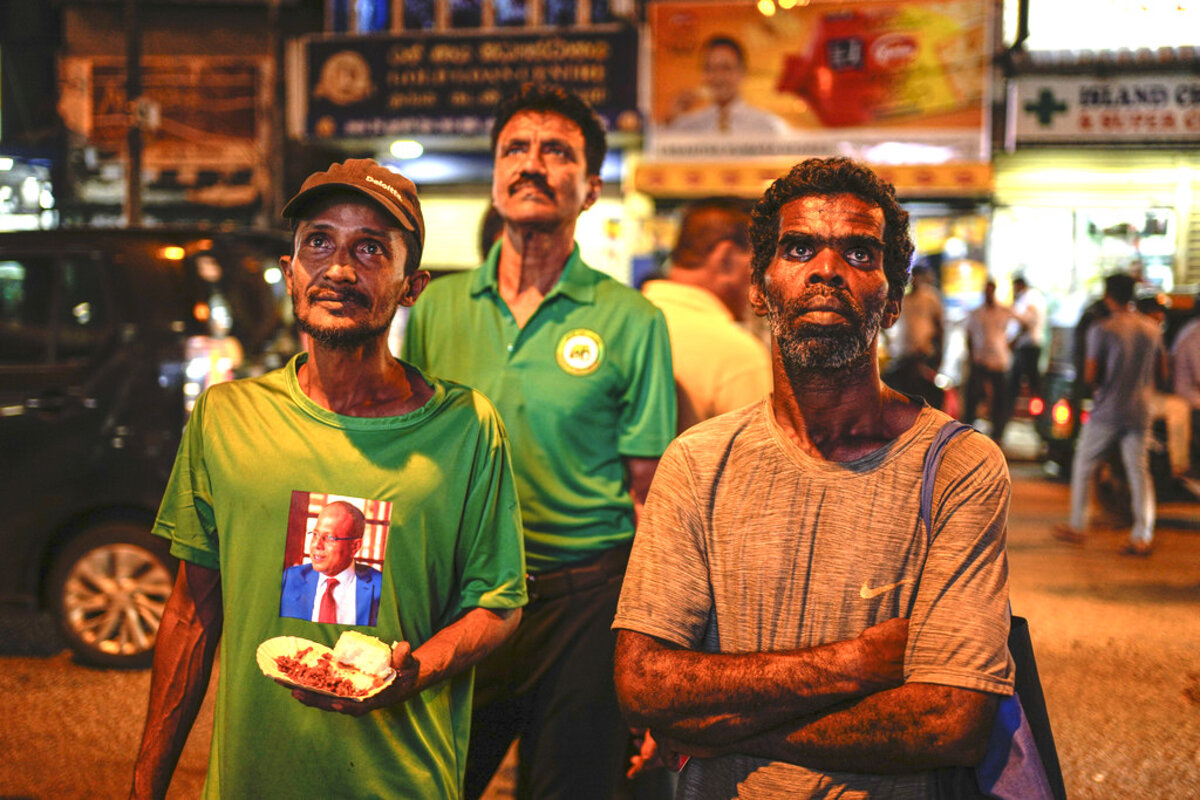The Supreme Court’s decision Monday to grant former President Donald Trump immunity for official acts was a seismic one, both for the 2024 election and for the office of the presidency.

Why is Christian Science in our name?
Our name is about honesty. The Monitor is owned by The Christian Science Church, and we’ve always been transparent about that.
The Church publishes the Monitor because it sees good journalism as vital to progress in the world. Since 1908, we’ve aimed “to injure no man, but to bless all mankind,” as our founder, Mary Baker Eddy, put it.
Here, you’ll find award-winning journalism not driven by commercial influences – a news organization that takes seriously its mission to uplift the world by seeking solutions and finding reasons for credible hope.
Explore values journalism About usMonitor Daily Podcast
- Follow us:
- Apple Podcasts
- Spotify
- RSS Feed
- Download
 Mark Sappenfield
Mark Sappenfield
These are momentous days. A landmark Supreme Court ruling about presidential immunity. Far-right gains in France. A debate defined by President Joe Biden’s disastrous performance and Donald Trump’s serial falsities.
The tendency can be to rise or fall on those shifting tides of political momentum. And much of the news coverage will. But there must still be a place for clear-eyed steadiness, which kindles to action not through fear or favor, but through calm, right thinking. That’s what we aim to offer you today and in the months ahead.
Already a subscriber? Log in
Help fund Monitor journalism for $11/ month
Monitor journalism changes lives because we open that too-small box that most people think they live in. We believe news can and should expand a sense of identity and possibility beyond narrow conventional expectations.
Our work isn't possible without your support.
Today’s stories
And why we wrote them
( 9 min. read )
Today’s news briefs
• Hurricane Beryl: The Category 4 hurricane, one of the earliest ones of its strength to form in the Atlantic, makes landfall on the Caribbean island of Carriacou.
• Biden presidential race decision: President Joe Biden’s family urges him to stay the course and keep fighting despite his dreadful debate performance against Republican candidate Donald Trump.
• Ukrainian inmates as soldiers: Ukraine is expanding its military recruiting to cope with battlefield shortages more than two years into fighting Russia’s full-scale invasion.
• Steve Bannon sentence: Longtime Donald Trump ally Steve Bannon begins a four-month sentence on contempt charges for defying a subpoena in the congressional investigation into the U.S. Capitol attack on Jan. 6, 2021.
• Israel releases hospital director: Israel had held the director of Gaza’s main hospital for seven months without charge or trial over allegations that the facility had been used as a Hamas command center.
( 5 min. read )
After one round of voting, France’s far-right National Rally party is in the driver’s seat to set up the next government. But if a left-wing coalition and President Emmanuel Macron’s bloc can coordinate, there’s still a chance for an upset.
The Explainer
( 6 min. read )
Fighting terrorism requires alerting the public to threats without playing into terrorists’ goal of spreading fear in society. We examine claims that the spike in illegal immigration in the U.S. could open the way for a terrorist attack.
( 5 min. read )
Scottish national identity is soaring. But Scotland’s nationalist party appears set to lose many, if not most, of its seats in U.K. Parliament on July 4. Why has the independence movement lost its influence on the political scene?
( 5 min. read )
The horseshoe crab has been misunderstood by beachgoers for years. Artists are part of a new preservation effort, helping people to see the ancient creature in a new light.
The Monitor's View
( 2 min. read )
More than half of low-income countries as well as five major European nations bear distressing levels of debt. The problem has been exacerbated by the high interest rates many central banks have imposed to slow inflation. Yet agreements reached last week between lenders and two borrowing states mark a promising trend in the other direction.
On June 26, Sri Lanka announced it had reached a deal with India, France, Japan, and China to restructure how it pays back the billions of dollars it owes them. Two days later, Ghana announced it had reached a similar arrangement with the International Monetary Fund.
The agreements open a critical path toward economic stability in the two countries. Both defaulted in 2022, sparking severe shortages and popular unrest. But the agreements also show that on at least one critical global issue, the international community is forging more cooperation than conflict.
“The progress achieved so far shows how the world can work together to reduce risks,” the IMF noted last week. “These improvements are possible in part because stakeholders have developed more experience working together ... [and] building trust.”
That new cooperation, allowing deals to be reached in months rather than in years, owes its vigor in part to two factors. Western creditors are gradually finding more ways to either coax more transparency from the world’s more opaque lenders – China, India, and Saudi Arabia – or work around them. Just as important, they are helping to nurture more civic confidence in debt-burdened societies by partnering with governments to address corruption.
In Sri Lanka, for example, Japan has launched initiatives with lawyers and prosecutors to boost the country’s ability to counter money laundering. In Ghana, the IMF is helping strengthen standards for tax administration and boost transparency in state agencies. The agreement to restructure $5.4 billion in debts involves both the Paris Club, made up of Western donors, and China.
The deals reached in Sri Lanka and Ghana give both countries access to critical additional funding as both show progress in reforming their economies. They provide a model for more efficient cooperation on debt relief in other fragile nations, such as Ethiopia. For ordinary citizens, that may eventually translate into stable prices and greater opportunity.
A recent meeting in Ghana illustrates perhaps an even more transformative effect. When traditional leaders in the country’s northwestern region met with Vice President Mahamudu Bawumia, they acknowledged his “principles, honesty, accountability and transparency in governance and devotion to duty.” Those qualities, they said, gave them confidence. Restructuring economies starts with renewing civic faith through integrity.
A Christian Science Perspective
Each weekday, the Monitor includes one clearly labeled religious article offering spiritual insight on contemporary issues, including the news. The publication – in its various forms – is produced for anyone who cares about the progress of the human endeavor around the world and seeks news reported with compassion, intelligence, and an essentially constructive lens. For many, that caring has religious roots. For many, it does not. The Monitor has always embraced both audiences. The Monitor is owned by a church – The First Church of Christ, Scientist, in Boston – whose founder was concerned with both the state of the world and the quality of available news.
( 3 min. read )
God, good, doesn’t share any power with evil, so we can expect to receive blessing after blessing from Him.
Viewfinder

A look ahead
Thank you for joining us today. This week, we’ll continue to look at the evolving American presidential race, including some significant wins for Donald Trump and the general mood in the nation after last week’s debate.
We also have a bonus story for you today. One of the music hits of the summer is also a model of conflict resolution, as two pop stars put aside jealousies and insecurities for “Girl, So Complicated.”








